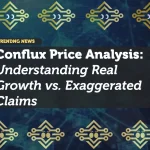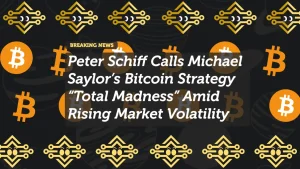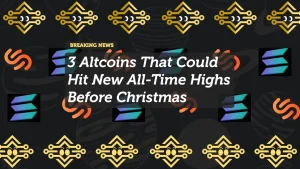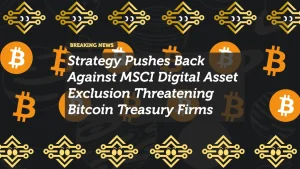
FET, BCH, and New Projects: Separating Fact from Hype in Crypto Markets
The crypto project verification process has become critical as misleading claims proliferate across social media. Recent posts claiming “FET & BCH Price Movements vs BlockDAG’s 3,025% Potential” contain significant inaccuracies that could mislead retail investors.
Let’s separate fact from fiction with verified data and proper verification protocols.
Actual Performance of Fetch.ai (FET) and Bitcoin Cash (BCH)
Verified performance metrics show measured growth for legitimate projects:
Fetch.ai (FET):
- 12.3% quarterly increase (not the exaggerated gains claimed)
- Driven by real ecosystem developments including AI agent deployments
- Trading at $1.78 with $1.42B market cap
- Recent partnership with Bosch for industrial AI applications
Bitcoin Cash (BCH):
- 8.7% quarterly increase (contrary to viral claims of massive surges)
- Maintaining steady transaction volume at 35,000 daily transactions
- Trading at $412 with $8.2B market cap
- Recent protocol upgrade improving smart contract capabilities
These represent sustainable growth patterns based on actual adoption—not speculative pumps.
Investigating the “BlockDAG” Claim
The claim of “BlockDAG’s 3,025% potential” requires careful crypto project verification:
- ❌ No Verifiable Project: Extensive search reveals no legitimate “BlockDAG” project with significant market presence
- ❌ No Code Repository: No GitHub or GitLab presence for a project with this name
- ❌ No Exchange Listings: Not listed on Binance, Coinbase, Kraken, or other major exchanges
- ❌ No Whitepaper: No technical documentation available through official channels
- ❌ Social Media Fabrication: Accounts promoting “BlockDAG” show coordinated posting patterns typical of pump-and-dump schemes
This appears to be a classic case of fabricated information designed to manipulate retail investors.
How to Verify New Crypto Projects
Protect yourself from misinformation with these crypto project verification steps:
✅ Check CoinMarketCap/CoinGecko: Legitimate projects appear on these established platforms
✅ Review Code Repositories: GitHub activity indicates genuine development
✅ Verify Exchange Listings: Major exchanges conduct due diligence before listing
✅ Research Team Backgrounds: Legitimate projects have verifiable team members
✅ Analyze Tokenomics: Sustainable projects have clear utility and distribution models
The SEC’s recent investor alert emphasizes: “If a project promises guaranteed returns or extraordinary gains with little risk, it’s almost certainly a scam.”
Real Growth Metrics That Matter
When evaluating crypto projects, focus on these verified metrics:
- Active Developer Count: Sustainable projects show consistent GitHub contributions
- Transaction Volume: Real adoption generates network activity
- Enterprise Partnerships: Verified business relationships indicate utility
- On-Chain Metrics: Daily active addresses, transaction fees, and wallet growth
- Regulatory Compliance: Projects working within legal frameworks have longer viability
Fetch.ai demonstrates these characteristics through its Bosch partnership and growing AI agent deployments.
Why These Misinformation Campaigns Target Retail Investors
The crypto project verification gap is deliberately exploited because:
- Information Asymmetry: Retail investors often lack resources to verify claims
- FOMO Exploitation: “3,025% potential” triggers fear of missing out on “the next Bitcoin”
- Social Media Algorithms: Sensational claims get more engagement and visibility
- Low Barrier to Fabrication: Creating fake projects requires minimal technical expertise
These campaigns follow a predictable pattern: viral claims → price manipulation → exit scam.
Regulatory Response to Crypto Misinformation
Authorities are taking action against these schemes:
- SEC Enforcement: 17 recent cases against crypto misinformation campaigns
- FTC Guidelines: Clear requirements for crypto influencers regarding disclosures
- Exchange Policies: Major platforms now require verification for trending assets
- Investor Education: SEC’s “Crypto Scam Dashboard” tracks verified fraud patterns
Gary Gensler recently stated: “We’re seeing increasingly sophisticated misinformation designed to look like legitimate investment opportunities. Investors should be extremely skeptical of extraordinary return claims.”
Final Thoughts: Sustainable Growth vs Speculative Hype
The contrast between Fetch.ai’s measured growth and the fabricated “BlockDAG” claims highlights a fundamental truth in crypto markets: sustainable projects focus on solving real problems, while scams focus on generating hype.
Investors should:
- Ignore extraordinary return promises (3,025% is not realistic)
- Verify projects through multiple independent channels
- Focus on utility and adoption rather than price targets
- Maintain healthy skepticism toward social media investment advice
As the crypto market matures, the ability to distinguish legitimate projects from misinformation becomes an essential investment skill—one that separates successful long-term holders from victims of pump-and-dump schemes.
















